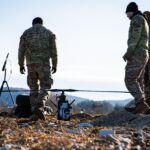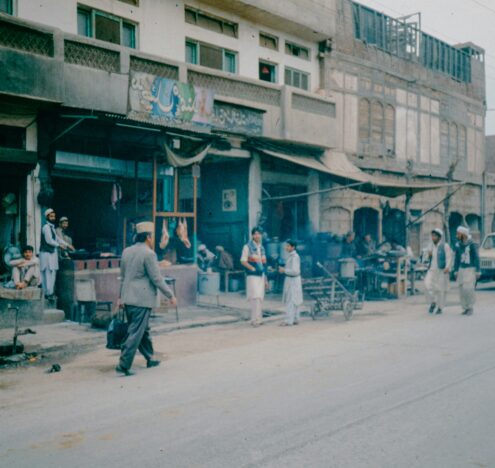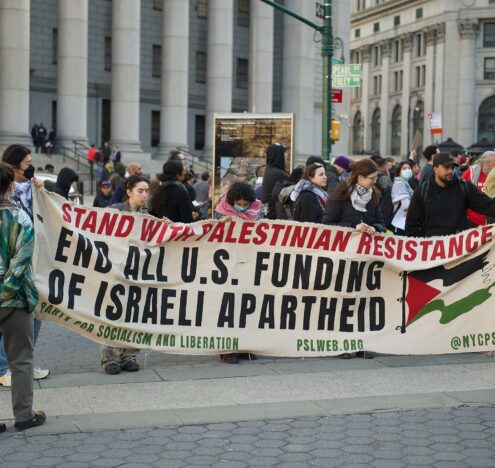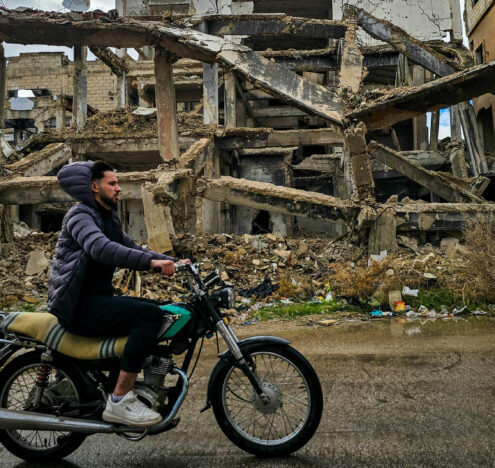In Mexico, drug cartels are increasingly using drones to smuggle drugs, for surveillance, and more recently, in fights over territory among cartels. The cartels are using small, autonomous drones or remotely operated aircraft equipped with various sensors and cameras. These drones’ versatility, relatively low cost, and accessibility have made them increasingly popular for activities including surveillance, photography, videography, agriculture, search and rescue, and even recreational use. But, as with any technology, drones have the potential to be employed for criminal activities.
One criminal group using drones in Mexico is the Cartel Jalisco Nueva Generación. It has been using the devices to attack other cartels and to intimidate the civilian population, as well as for intelligence, surveillance, and reconnaissance since at least 2017, according to C/O Futures, a specialized research and analytical consulting agency. And the situation has recently gotten worse. Now, this cartel is modifying commercial drones to create DIY weapons incorporating explosives, nails, and pellets. The criminal organization has also created a specialized group called “Operadores Droneros” (Drone Operators) composed of twelve men operating in the states of Michoacán and Jalisco which began training around 2021, learning how to produce their own explosives and operate drones.
Consequences for the Community
While the attacks have usually been carried out against rival cartels like Caballeros Templarios and Los Tlacos, they have now been seen in the rural community of El Nuevo Caracol in Guerrero. In this community, these attacks have killed at least two people and damaged several buildings. The situation has led to the forced displacement of at least 600 people earlier this year and spread terror among the remaining inhabitants. As a result, civil society organizations and people from 67 communities in San Miguel Tatolapan and Heliodoro Castillo in Guerrero have asked President López Obrador for protection.
One of these organizations is the Minerva Bello Center for the Rights of Victims of Violence. Its Director, Father José Filiberto Velázquez Florencio, also known as “Padre Fili,” has visited the communities and spoken out against the violence. Early in the morning of Oct. 18, 2023, he was the victim of an armed attack. In an interview two days after his attempted murder, he mentions that drones have been used in Guerrero because of the state’s complicated landscape. “It is a zone filled with mountains, hills, where there is a natural barrier which is a river. A very wide river. The Balsas River. And because [of that] the inhabitants closed the roads. Therefore, the only way to affect them was shooting from the hills and launching bombs with drones. It has a lot to do with the territory, the orographic context, and the difficulties of reaching those places with men on the ground and vehicles.” He claims that the innovation with drones has been an attempt to reach a zone that is rich in gold.
Guerrero contains a region known as the Golden Belt. Torex Gold and Equinox Gold, Canadian mining companies, arrived in the community of Xochipala over a decade ago. As a result, the region also became attractive to drug cartels who increased their activities to control the area. Father Fili mentions that criminal groups seek to increase their revenue through extortions such as collecting money from local businesses for “protection.” While this practice has taken place for years now, Father Fili recalls that it reached Nuevo Caracol in 2022. Last November, a group stopped a public transportation van and made it turn back. Since then, there have been narco road blockages and messages stating a rejection of a criminal group known as the Tlacos which the population and local authorities interpreted as a sign that the Familia Michoacana was controlling the area.
There are anti-drone technologies such as radio frequency jammers, drone detection systems, or artificial intelligence and machine learning algorithms that can be used to combat the growing use of drones. But strengthening cooperation between local and federal authorities is essential to pursue coordinated strategies.
Aggression from the criminals has been constant, creating distress in the community. Residents have responded by creating community policing groups with inhabitants from at least 30 towns. Father Fili said that it was in May 2023 that the criminal organization began attacking with drones, which led to the alliance of 67 communities demanding protection from the local and federal authorities.
Guerrero is Mexico’s seventh-highest state for murders, and the insecurity in many towns is only worsening. Experts have criticized the centralized and militaristic response to the security situation in Mexico and human rights monitors have warned against the militarization of the formerly civilian National Guard.
In August, the President sent an initiative to Congress to regulate drones, which will sanction anyone using them for illegal activities, or to transport explosives, to up to 60 years in prison. A month later, Congress supported the initiative. The government has also acquired drone and anti-drone technology in military operations against the use of modified drones from organized criminal groups, reporting an increase in the confiscation of drones and explosives.
The Way Forward
However, there is still much to be done. Easy access to this technology and the use of explosive drones will only increase, further highlighting the constant evolution of organized crime and complicating security efforts. Therefore, the adoption of adaptive technologies and strategies to counter the use of drones is essential. There are anti-drone technologies that can be used by government agencies such as radio frequency jammers, drone detection systems, or artificial intelligence and machine learning algorithms, along with the enhancement of intelligence and surveillance. But strengthening cooperation between local and federal authorities is essential to pursue coordinated strategies. Simultaneously, the underlying causes of cartel recruitment must be addressed through the continuation and strengthening of social programs.
A day after the attack on his life, Father Fili reflected on the violence in his community and Guerrero. He said he is concerned over the capital Chilpancingo — he considers it to be a “time bomb.” “That is where the executions are currently happening. Yesterday, they threw a dismembered body in front of the gates of the National Guard in Chilpancingo. Some would say, it is a phrase I heard, it is not mine, but they say we are a country filled with military quarters surrounded by violence. I think you are going to continue hearing very delicate news about violence in this zone. Especially now that election time is closing in and the political crimes will be an everyday occurrence.”
He says that the role of civil society organizations is being dismissed and underappreciated by the government. “We live in an era where the right to defend oneself becomes a political offense against those who are in power. What I think has happened and has resulted in our weakening as a civil organization for human rights or as journalists or whatever we are within civil society is the monopoly that the State wants to hold over the defense of human rights, over the attention to victims, over the attention to disabled people, disdaining authentic human work carried out away from political parties. This puts us at risk. It makes us more vulnerable.”




















